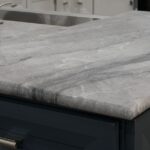You most likely know the deal – when looking for the perfect addition to spice up your home aesthetics and overall vibe, natural stones are the main contenders. Quartzite countertops, in particular, share many great visual and technical characteristics to embellish any kind of space, especially when it comes to kitchens and bathrooms. There’s a reason (several, in fact) why quartzite has such high demand on the market nowadays. Have you ever considered cream quartzite countertops before?
If not, it’s time to discover the possibilities that await you. Keep reading the article to learn all about cream quartzite countertops and what they bring to the table.
Read as well: Quartzite Countertop Colors – Complete Guide
The varied color pool of quartzite stones
Quartzite is a metamorphic rock that forms from sandstone under high heat and pressure. Therefore, the varied colors of quartzite can be attributed to several factors – including mineral impurities, the original composition of the sandstone, and the geological processes involved in its formation.
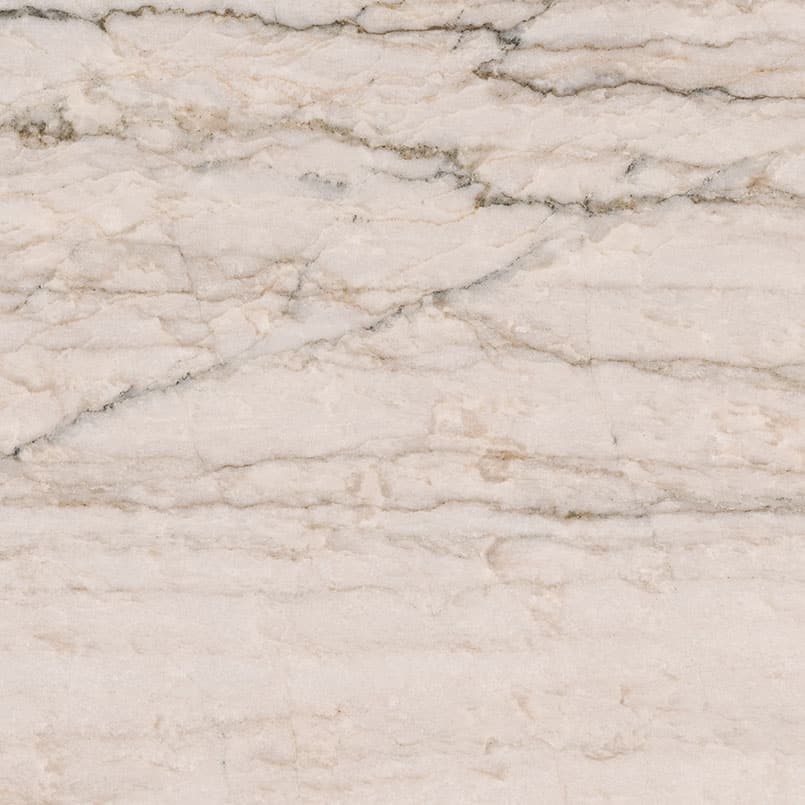
Here are some reasons why quartzite stones can be found naturally in cream, among other hues:
- The presence of different minerals in the original sandstone can contribute to the color variations in quartzite. For example, iron oxide impurities can give quartzite a range of colors from white and gray to pink, red, and even purple. Other minerals like chlorite, hematite, and feldspar can also influence the coloration.
- The color of quartzite can be influenced by the composition of the original sandstone precursor. Given how sandstone is composed mainly of quartz grains, it can also contain varying amounts of other minerals, organic material, and even clay – which will affect the color of the resulting quartzite.
- The metamorphic processes that quartzite undergoes during its formation can impact its color. High heat and pressure cause recrystallization of the quartz grains, and the minerals present may change the composition.
- The geological history of the region where quartzite forms can also play a role in its color. Different geological events, such as the presence of certain minerals in the region or tectonic processes, can contribute to the development of distinct colors in quartzite.
- Exposure to the elements and weathering processes over time can also alter the color of quartzite – surface oxidation and other weathering effects can lead to changes in color, especially in the outer layers of the rock.
In the end, this unique combination of different settings results in the wide range of colors observed in quartzite stones. Cream-colored quartzite, in this sense, can exhibit a range of shades and tones depending on the specific geological conditions during its formation. Just like classic white, the cream color in quartzite is often associated with the presence of certain minerals and the overall mineral composition of the rock.
Highlights of cream quartzite countertops
The benefits of cream quartzite when compared to countertops of other colors are often subjective and depend on personal preferences and specific needs. However, there are some general characteristics and advantages associated with cream-colored quartzite countertops that may appeal to many homeowners and designers, such as:
- Cream is a neutral and versatile color that can complement various kitchen or bathroom designs and color schemes, providing a timeless and classic look that works well with different styles, from modern to traditional.
- Cream-colored surfaces can help reflect light, making the space feel brighter and more open. This can be particularly beneficial in smaller kitchens or bathrooms where maximizing natural light is desirable.
- Cream hues often evoke a warm and inviting feel – thus creating a cozy atmosphere and making the space more welcoming.
- Cream is a neutral color that can easily coordinate with various cabinetry, flooring, and backsplash options. It provides a flexible backdrop for incorporating different design elements into the overall aesthetic.
- Lighter colors may be more forgiving when it comes to hiding minor stains and scratches compared to darker colors. While it’s essential to maintain and care for any countertop properly, lighter colors may show wear less prominently.
- Lighter-colored countertops, including cream quartzite, may feel cooler to the touch compared to darker colors. This can be a consideration in warmer climates or for those who prefer surfaces that don’t absorb as much heat.
- They often have a timeless and enduring aesthetic. Choosing a classic color can be a practical decision for homeowners who want a look that won’t quickly go out of style.
Quartzite x quartz
Here comes the universal question.
The main difference here is simple: quartzite is natural, whereas quartz is a manmade product fabricated from quartzite. Quartz countertops are engineered stone surfaces made primarily of quartzite crystals (typically around 90-95%) bound together with resins and pigments. In other words, they are manufactured in a controlled environment, while quartzite is collected from natural quarries.
The primary thing to consider, then, lies in their composition, formation, and versatility. Quartz is non-porous – meaning it doesn’t have to be sealed like quartzite – and can be found in a vast array of colors on the market. That said, each has its own set of advantages and considerations, so the choice between them often depends on personal preferences, budget, and specific application requirements.
Here at Eagle Stones, both options are available for viewing and purchase. Visit our showroom to analyze them firsthand!
Read as well: The Best of Black Quartzite Countertops
The best of cream quartzite countertops
Now that you know the basics behind this variation of quartzite stones – especially what this investment may offer in the long run – we’ve listed a few popular models to inspire you. Hopefully, our selection will help you settle on the best possible choice.
Check out 3 cream quartzite stones widely available:
Sea Pearl Quartzite
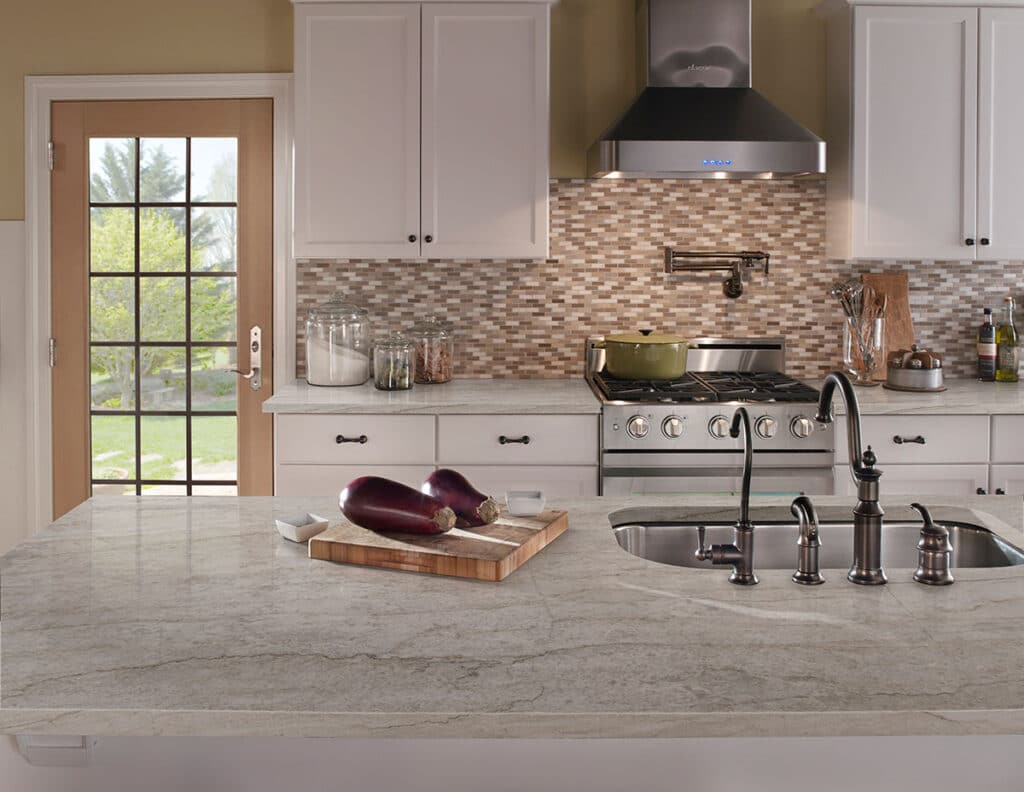
Sea Pearl quartzite often exhibits a creamy background with swirls of light gray and beige. This means that the stone may have a delicate, marbled appearance, adding visual interest to the countertop surface.
Macaubas Cream Quartzite
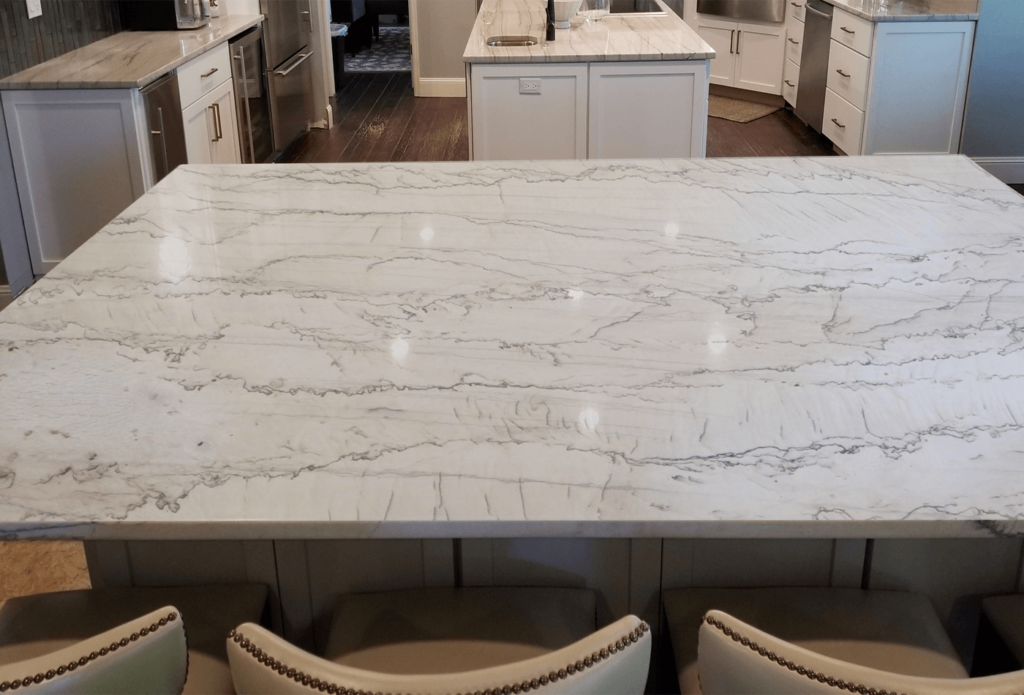
Macaubas Cream is known for its soft, creamy tones with occasional light brown or gray veining. The overall effect is elegant and can work well in various kitchen or bathroom designs.
Crema Delicatus Quartzite
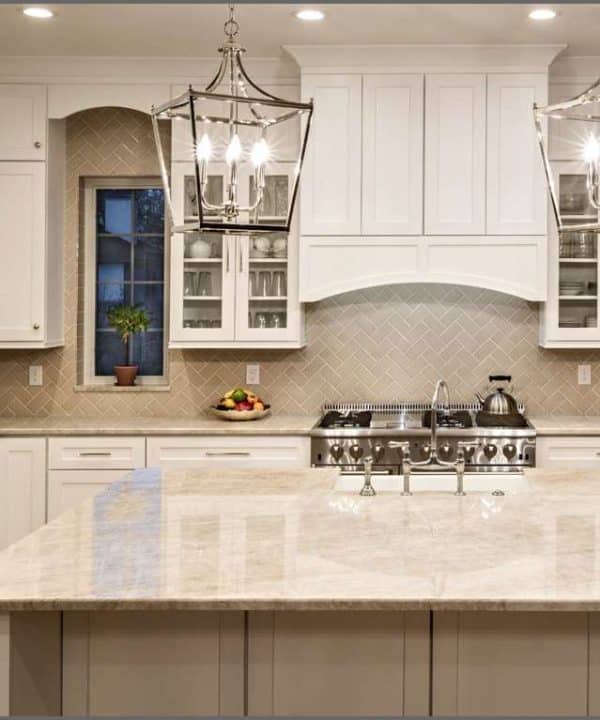
Crema Delicatus quartzite features a light cream or beige color with subtle veining that may include shades of gray and brown. It provides a classic and versatile look for countertops.
Eagle Stones is the right choice for your home renovation
Contact us today!
If you live in Sarasota, FL, or any surrounding county, we can offer you a team of professionals who have been helping clients make their home dreams come true for over a decade. Eagle Stones counts with a vast catalog of selected natural stones from all over the globe, as well as installation and maintenance services that are sure to fit your needs.
We can go to your house today and give you a free estimate! Choose from the best cream quartzite countertops to undertake the complete design revamp you’ve been craving.
Also, don’t miss: Quartzite Countertops vs Granite Countertops

